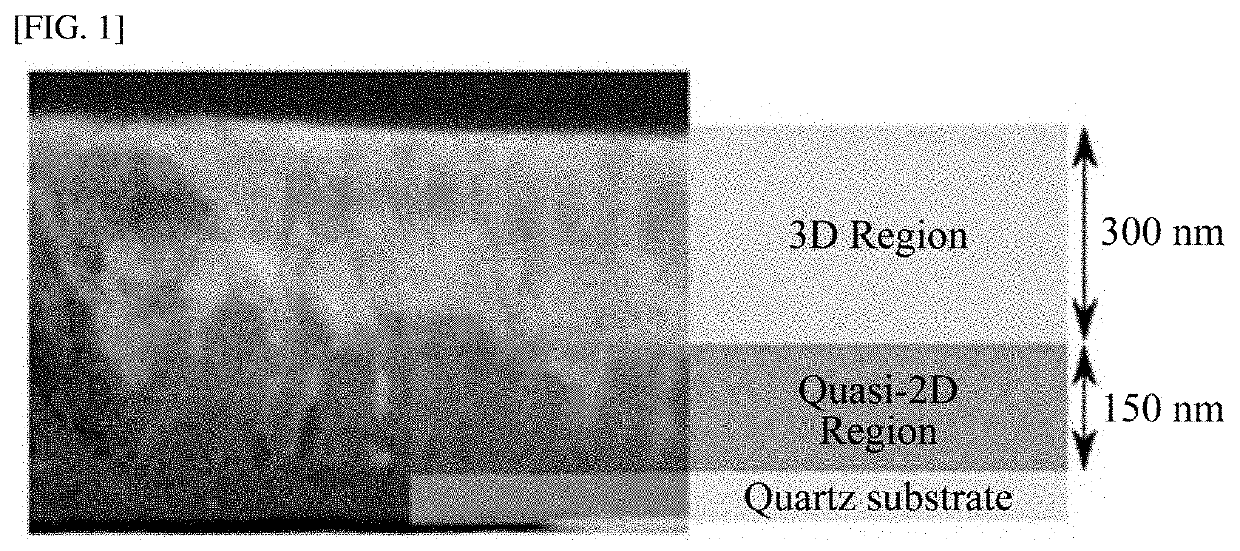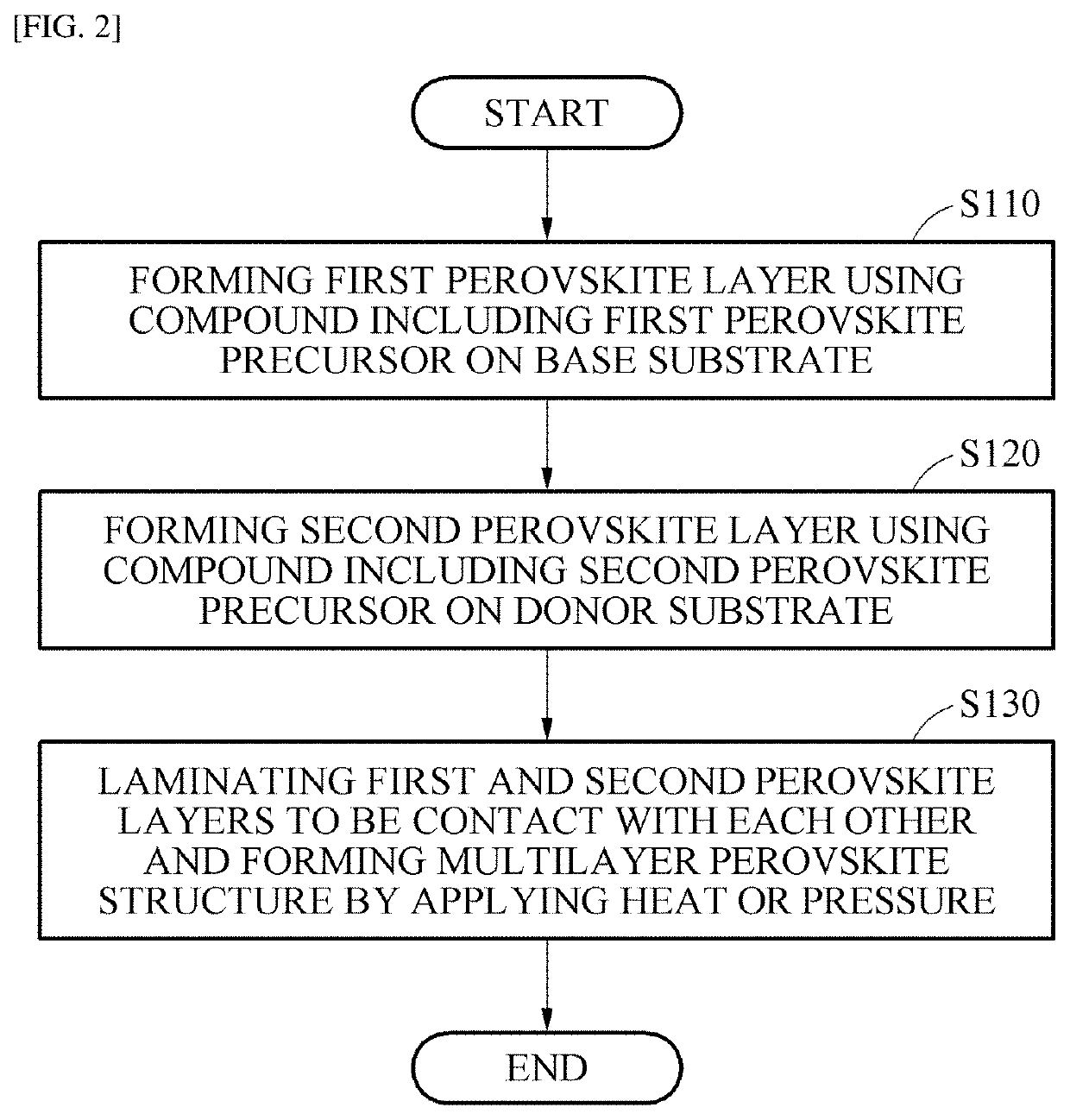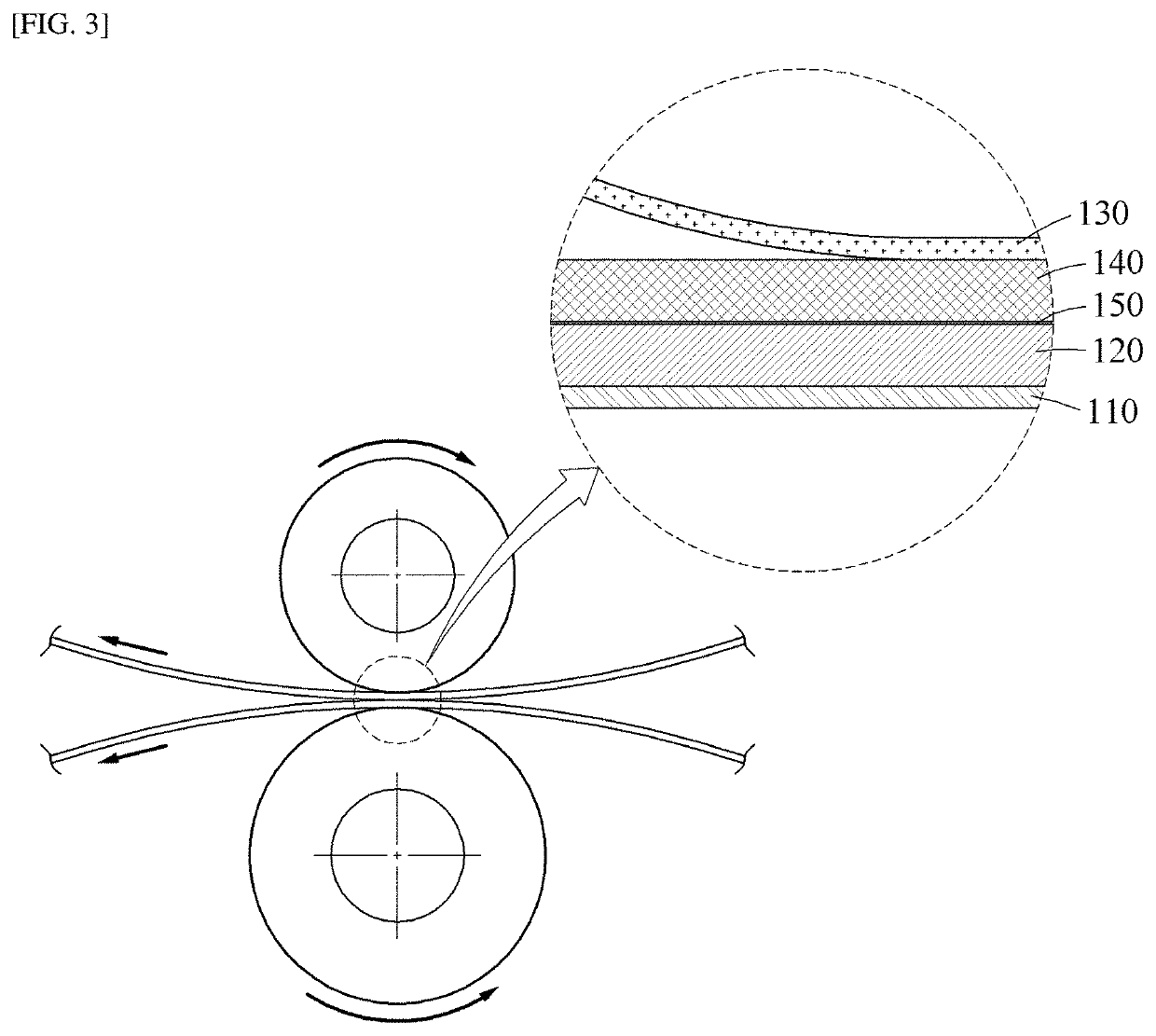Method of manufacturing multilayer perovskite structure, and multilayer perovskite structure and solar cell manufactured using the same
a technology of perovskite crystal structure and manufacturing method, which is applied in the manufacture of final products, basic electric elements, solid-state devices, etc., can solve the problems of limited use low light conversion efficiency, and limited commercialization of 3-dimensional (3d) perovskite crystal structure materials
- Summary
- Abstract
- Description
- Claims
- Application Information
AI Technical Summary
Benefits of technology
Problems solved by technology
Method used
Image
Examples
example 1
[0269]A [CH3NH3PbBr3]0.05[HC(NH2)2PbI3]0.95 solution having a concentration of 1 M was prepared by dissolving CH3NH3Br2 and PbBr2 in a molar ratio of 1:1, HC(NH2)2I and PbI2 in a molar ratio of 1:1, and CH3NH3Br2 and HC(NH2)2I in a molar ratio of 1:4 in a solvent containing dimethylsulfoxide and dimethylformamide in a ratio of 1:8.
[0270]A glass substrate coated with fluorine-doped tin oxide having a size of 1×1 inch (FTO; F-doped SnO2, 8 ohms / cm2, Pilkington, hereinafter referred to as FTO substrate) was washed with distilled water containing a surfactant and with ethanol sequentially.
[0271]The prepared solution was applied onto the washed FTO substrate. At this time, the solution was applied in batch to the center of rotation of the FTO substrate. Then, spin coating was performed at 5,000 rpm.
[0272]When spin coating time reached 25 seconds, a non-solvent diethyl ether was applied in batch to the center of rotation of the spinning FTO substrate, and then spin coating was additionall...
example 2
[0278]A multilayer perovskite structure was manufactured in the same manner as in Example 1, except that the substrate on which the second perovskite layer was formed was heat-treated at 60° C.
example 3
[0279]A multilayer perovskite structure was manufactured in the same manner as in Example 1, except that the substrate on which the second perovskite layer was formed was heat-treated at 70° C.
PUM
 Login to View More
Login to View More Abstract
Description
Claims
Application Information
 Login to View More
Login to View More - R&D
- Intellectual Property
- Life Sciences
- Materials
- Tech Scout
- Unparalleled Data Quality
- Higher Quality Content
- 60% Fewer Hallucinations
Browse by: Latest US Patents, China's latest patents, Technical Efficacy Thesaurus, Application Domain, Technology Topic, Popular Technical Reports.
© 2025 PatSnap. All rights reserved.Legal|Privacy policy|Modern Slavery Act Transparency Statement|Sitemap|About US| Contact US: help@patsnap.com



